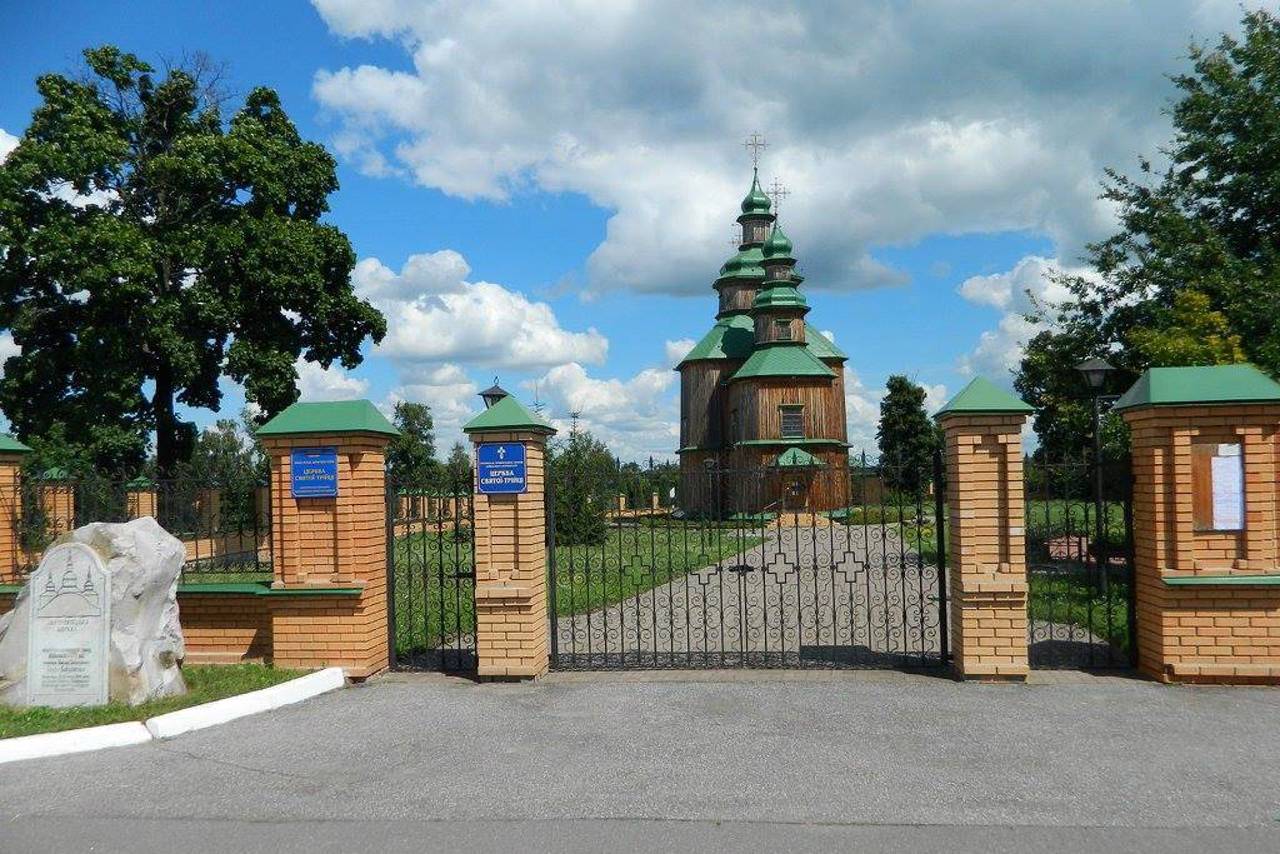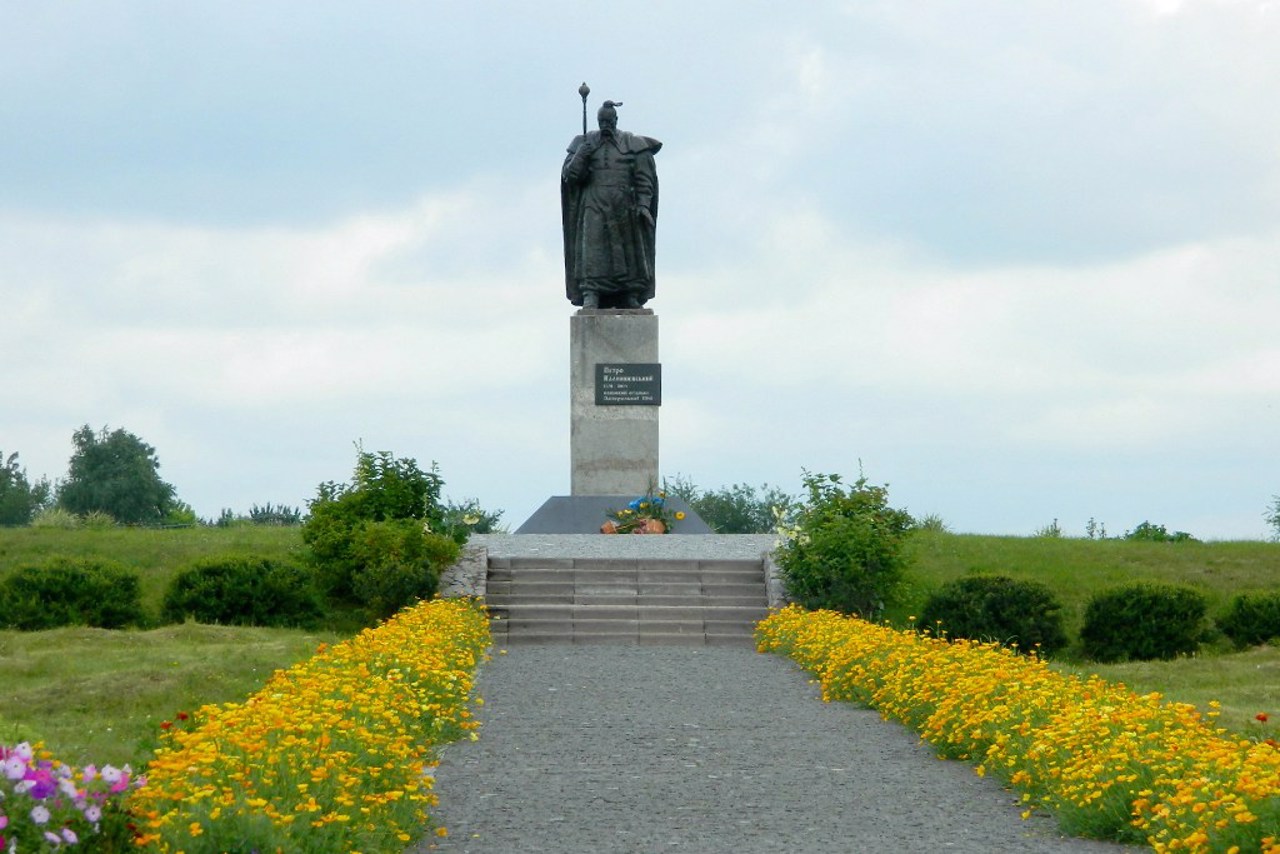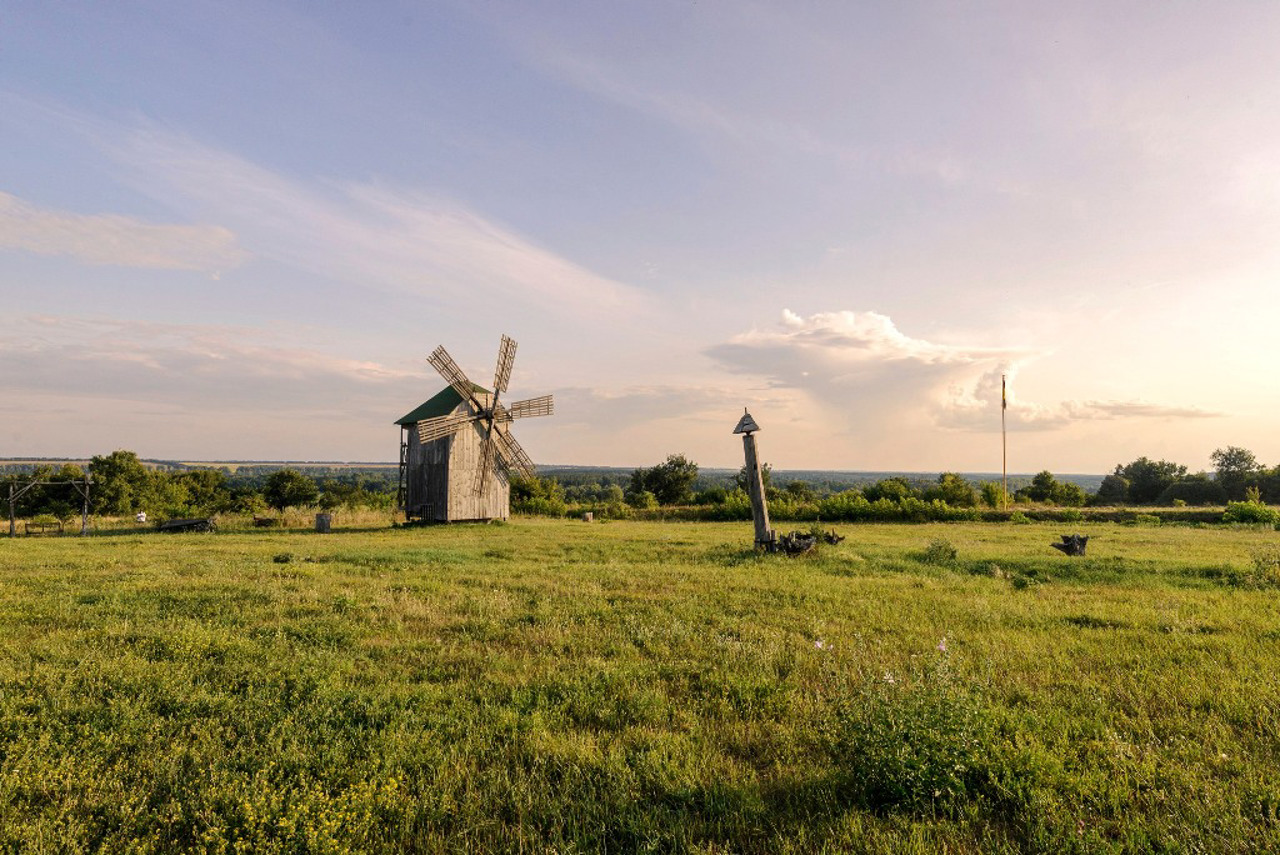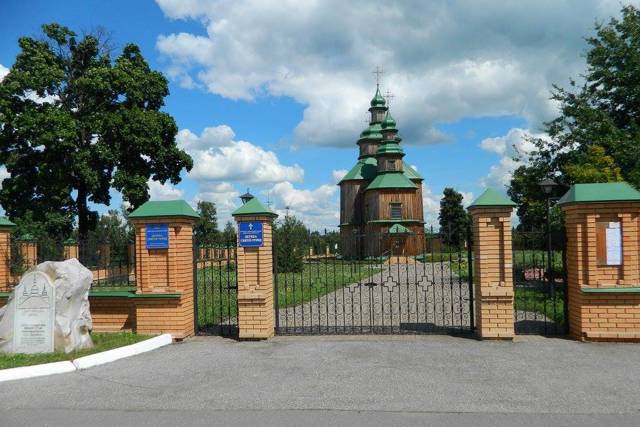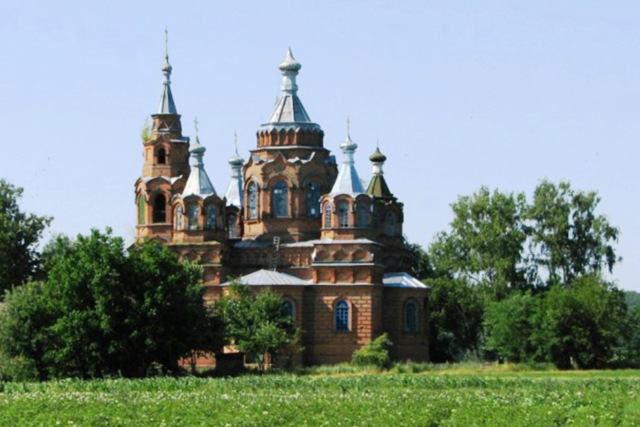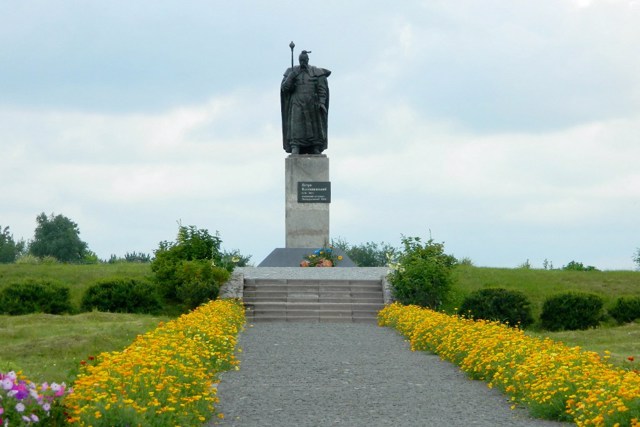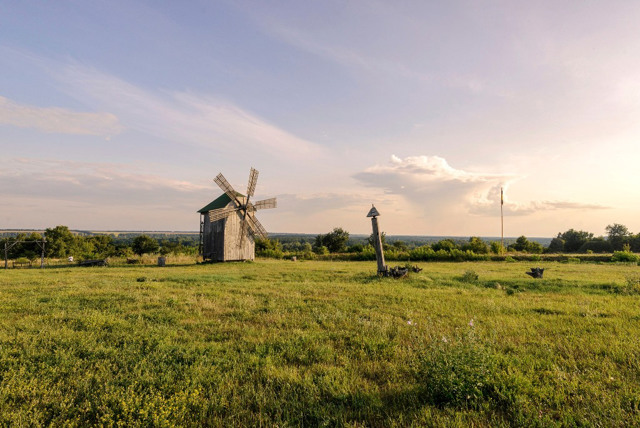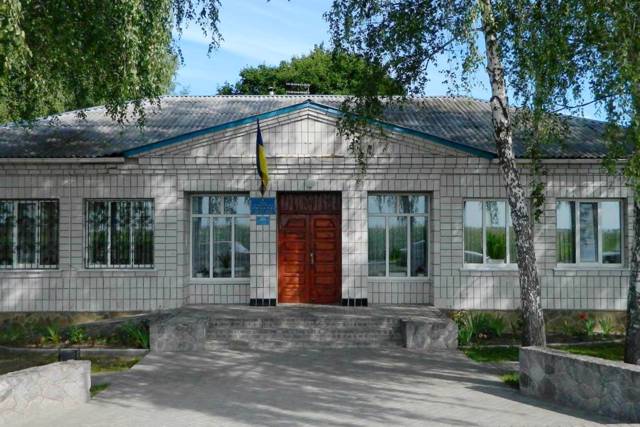Functional temporarily unavailable
Pustoviitivka
Travel guide online Pustoviitivka
General information about Pustoviitivka
The village of Pustoviitivka in Sumy Region is known as the birthplace of the last basket chieftain of the Zaporizhzhian Sich, Petro Kalnyshevsky. It is located on the Sula River 10 kilometers northeast of Romny, next to the H-07 highway to Sumy. Administratively, it is part of the Romny district of Sumy region.
The Cossack settlement of Pustoviitivka arose at the beginning of the 17th century, although some sources indicate that it was known since 1252. The name may come from the surname Pustoviyt or be due to the fact that the village did not have its own viyt (headman).
In 1690, on the nearby farm of Pustoviitivka, in a peasant (according to other sources, in a noble) family, a prominent Ukrainian statesman, cultural and religious figure Petro Kalnyshevsky was born. He be ...
The village of Pustoviitivka in Sumy Region is known as the birthplace of the last basket chieftain of the Zaporizhzhian Sich, Petro Kalnyshevsky. It is located on the Sula River 10 kilometers northeast of Romny, next to the H-07 highway to Sumy. Administratively, it is part of the Romny district of Sumy region.
The Cossack settlement of Pustoviitivka arose at the beginning of the 17th century, although some sources indicate that it was known since 1252. The name may come from the surname Pustoviyt or be due to the fact that the village did not have its own viyt (headman).
In 1690, on the nearby farm of Pustoviitivka, in a peasant (according to other sources, in a noble) family, a prominent Ukrainian statesman, cultural and religious figure Petro Kalnyshevsky was born. He became the last kosh ataman of the Zaporizhzhian Sich, died in 1803 in Russian exile and was canonized by the Orthodox Church of Ukraine.
In Pustoviytivka, a wooden Holy Trinity Church has been preserved, built in 1773 at Kalnyshevsky's expense and restored in 2006 on the initiative of the President of Ukraine Viktor Yushchenko. The restored church with the adjacent park area "Kalnyshevyi Hai" and the ethnographic site "Vitriak" form the architectural and ethnographic complex "Old Village". A monument to Petro Kalnyshevsky has been erected, and the museum of the ataman is open.
The brick Saint Nicholas Church, built in 1900-1906 according to the design of Poltava architect Serhiy Nosov, has also been preserved.
Not far from the village are Scythian mounds, a natural monument - Zolotukha Hill, as well as the Pustoviitivskyi hydrological reserve.
Село Пустовійтівка на Сумщині відоме як батьківщина останнього кошового отамана Запорозької Січі Петра Калнишевського. Розташоване на річці Сула за 10 кілометрів на північний схід від Ромнів, поруч із трасою Н-07 на Суми. Адміністративно входить до складу Роменського району Сумської області.
Козацьке поселення Пустовійтівка виникло на початку XVII століття, хоча деякі джерела вказують, що воно було відоме ще з 1252 року. Назва може походити від прізвища Пустовійт або пов'язана з тим, що село не мало свого війта (старости).
У 1690 році на ближньому хуторі Пустовійтівки в селянській (за іншими даними – у шляхетській) родині народився визначний український державний, культурний та релігійний діяч Петро Калнишевський, що став останнім кошовим отаманом Запорізької Січі, ...
Село Пустовійтівка на Сумщині відоме як батьківщина останнього кошового отамана Запорозької Січі Петра Калнишевського. Розташоване на річці Сула за 10 кілометрів на північний схід від Ромнів, поруч із трасою Н-07 на Суми. Адміністративно входить до складу Роменського району Сумської області.
Козацьке поселення Пустовійтівка виникло на початку XVII століття, хоча деякі джерела вказують, що воно було відоме ще з 1252 року. Назва може походити від прізвища Пустовійт або пов'язана з тим, що село не мало свого війта (старости).
У 1690 році на ближньому хуторі Пустовійтівки в селянській (за іншими даними – у шляхетській) родині народився визначний український державний, культурний та релігійний діяч Петро Калнишевський, що став останнім кошовим отаманом Запорізької Січі, помер у 1803 році в російському засланні та був канонізований Православною церквою України.
В Пустовійтівці збереглася дерев'яна Свято-Троїцька церква, збудована 1773 року коштом Калнишевського і відреставрована у 2006 році з ініціативи Президента України Віктора Ющенка. Відновлена церква з прилеглою парковою зоною "Калнишевий гай" та етнографічним майданчиком "Вітряк" формують архітектурно-етнографічний комплекс "Старе село". Встановлено пам'ятник Петру Калнишевському, працює музей отамана.
Також збереглася цегляна Свято-Миколаївська церква, збудована у 1900-1906 роках за проєктом полтавського архітектора Сергія Носова.
Неподалік від села розташовані скіфські кургани, пам'ятка природи – пагорб Золотуха, а також гідрологічний заказник "Пустовійтівський".
Сплануй своє перебування у Pustoviitivka
What to see and where to go in Pustoviitivka
Tourist attractions and museums of Pustoviitivka
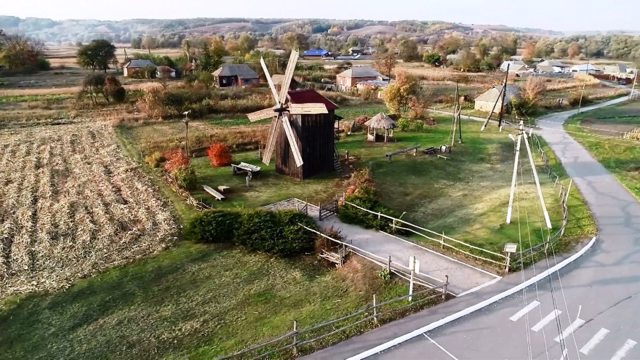
Architectural and Ethnographic Complex "Old Village"
Museum / gallery , Ethnographic complex
The Architectural and Ethnographic Complex "Old Village" (Stare Selo) in Pustoviitivka is a research sector of the Museum of the last otaman of the Zaporizhzhian Sich, Petro Kalnyshevsky, which recreates the rural landscape traditional for Ukraine in the 18th–19th centuries.
The complex is based on the Church of the Holy Trinity, built in 1773 at the expense of a native of the village, Petro Kalnyshevsky, and restored in 2006-2007. The park area "Kalnyshevyi Hai" adjoins the church.
Across the road from the church, there is a small open-air ethnographic site (scansen) with a restored 19th-century windmill. The windmill is six-winged, pillar-type, surrounded by a wattle fence. In the courtyard next to it stands a milk wagon. Nearby is a well-crane with a trough for watering horses, a stall and an oak log-bench for resting. Another hundred meters from the church you can see a barn under reeds and soot under tiles.
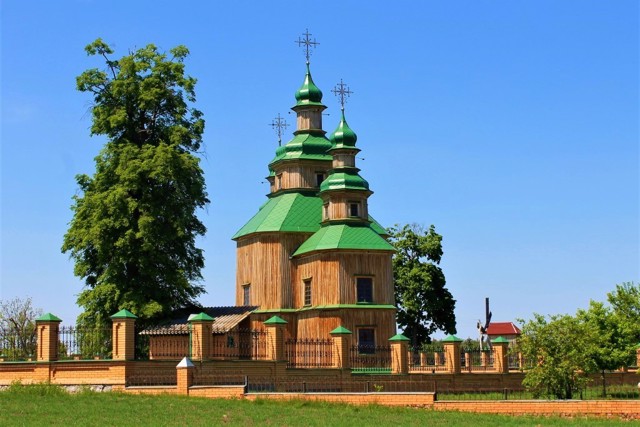
Holy Trinity Church
Temple , Architecture
The wooden Holy Trinity Church in Pustoviitivka was founded in 1773 at the expense of the last basket chieftain of Zaporizhzhia Sich, Petro Kalnyshevskyi.
After the Second World War, the temple premises were used as a warehouse.
In 2007, the Trinity Church in Pustoviitivka was reconstructed according to traditional technologies of folk wooden architecture as part of the creation of a memorial to Petro Kalnyshevskyi.
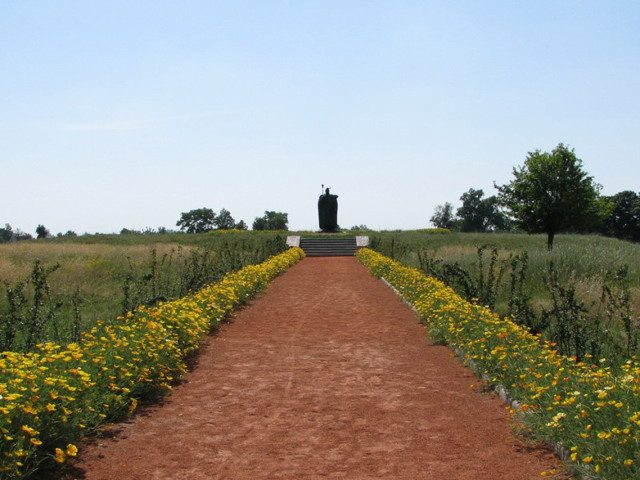
Petro Kalnyshevsky Monument
Monument
The first monument in Ukraine to Petro Kalnyshevskyi, the last kosh chieftain of Zaporizhzhia Sich, was erected in the village of Pustoviitivka, where he was born in 1691.
In fact, with the installation of this monument in 1991, the creation of the Kalnyshevsky memorial in Pustoviitivka began.
The chieftain is depicted with the hetman's mace in his hand. The authors of the monument are academician Vasyl Boroday and sculptor Rostyslav Synko.
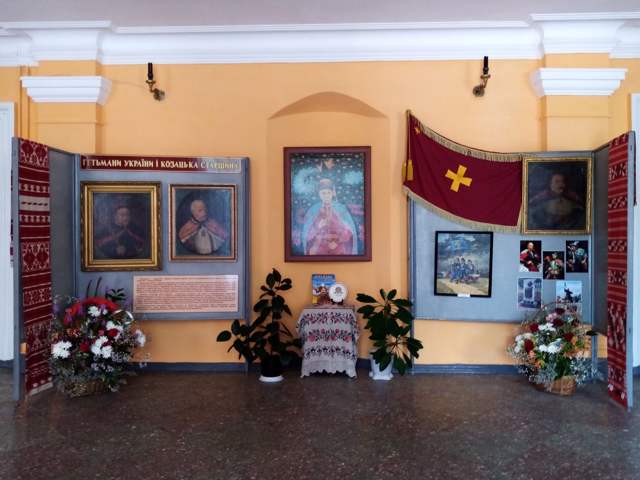
Petro Kalnyshevsky Museum
Museum / gallery
The memorial complex of the last Kish Otaman of the Zaporizhzhia Sich Petro Kalnyshevsky in the village of Pustoviitivka in the Sumy region includes the Museum of Petro Kalnyshevsky, which is a department of the State Historical and Cultural Reserve "Posullia".
The museum was founded in 2005 on the basis of materials from the Romny Museum of Local Lore, which previously formed the exhibition "Legendary Koshovyi". It is located in the house of culture of the village of Pustoviitivka, in the homeland of Petro Kalnyshevsky.
The main exposition tells about the life of the Kish Otaman: childhood in his native village, dedication to the Sich, service in the Zaporozhzhian Lowland Army, election as Kish Otaman, participation in the Russo-Turkish war of 1768-1774, imprisonment by order of the tsarist government and exile on Solovki. Reconstruction of the interior of the Solovki cell, where Petro Kalnyshevsky spent 25 years, is presented.
Also on display are fragments of a wooden Trinity Church, built at the expense of the Otaman in Pustoviitivka (now reconstructed). You can also see a collection of Cossack weapons, coins, pipes, icons.
Two more exhibition halls present local archeological finds of Scythian times and materials about other prominent natives of Pustoviitivka.
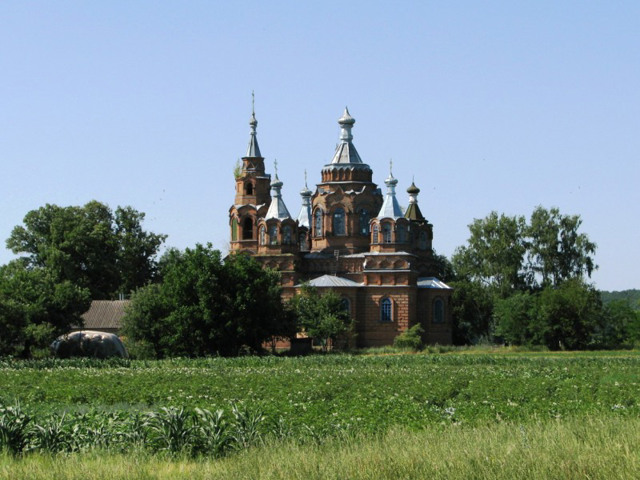
Saint Nicholas Church
Temple , Architecture
Saint Nicholas Church in Pustoviitivka was founded in 1900 according to the project of Poltava architect Serhiн Nosov.
Construction was completed in 1906.
Currently, the Nicholas Church is active and belongs to the UOC of the Moscow Patriarchate.
Reviews Pustoviitivka
Geographical information about Pustoviitivka
| {{itemKey}} | {{itemValue}} |
|---|---|
| Region |
Sumy |
